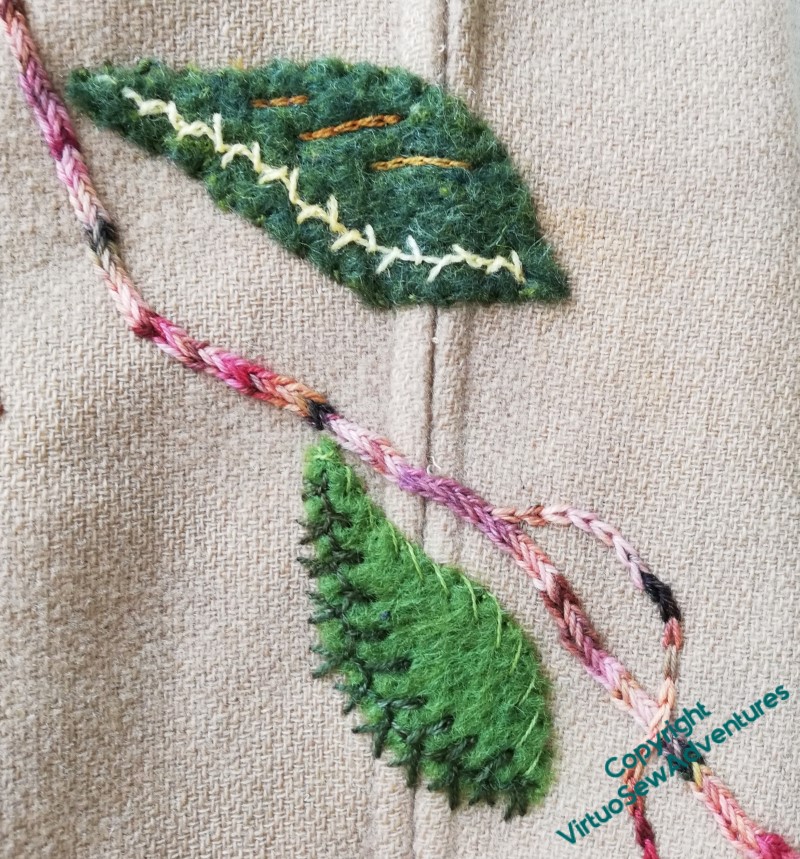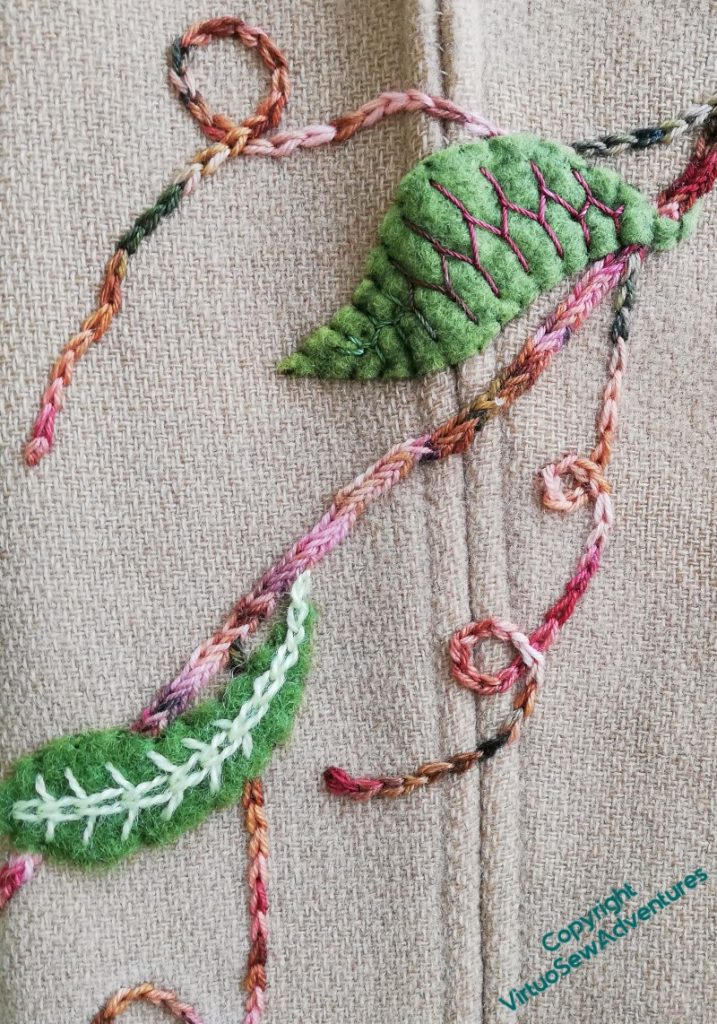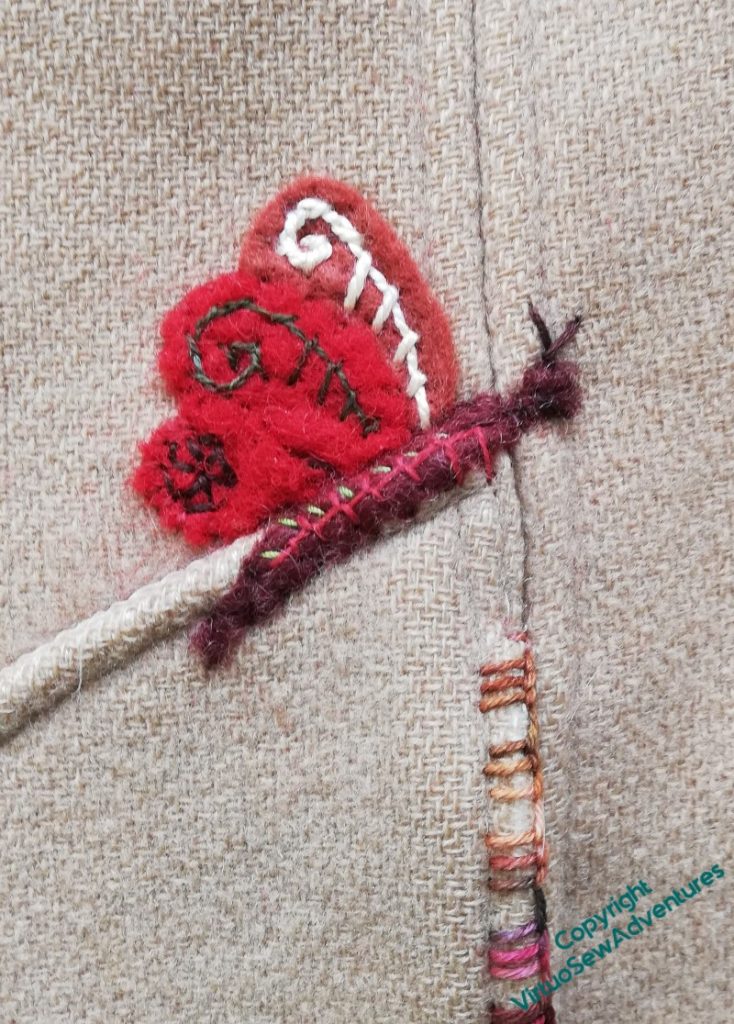Little Jacket – still more foliage
Adding the large leaves involved some thinking, because I wanted to keep the variations going. Some of them are edged, some of them emphasise “veins”, and some, like these two, are asymetrical.
The darkest green felt helps the pale yellow (alternating twisted chain, I think) to shine, and the three lines of darker yellow just add another variation which ties in with some of the colours in the yarn I used for the stem.
I found the middle shade of felt a little harder, always. I wanted to ensure there were contrasts and changes of texture, but middling shades are just trickier to balance. The different textures here help a bit – mercerised cotton as against a fine crewel wool.
Wheatsheaf stitch down the centre of the lower leaf turns into chain stitch as the leaf narrows, and the Cretan Stitch in the upper leaf presents a nice contrast, dark red-browns in a finer yarn opposed to the fluffy wool of the lower leaf.
All of these leaves also run over one or other of the seams I had to release to do most of the stitching, so they were a bit trickier for that reason as well. I will have to steam-press these when I’ve finished, to settle the seams back the way they should be.
This picture also shows that I am adding chain stitch tendrils. One of the things I learnt from all the Online University courses with Thistle Threads is that sometimes More Really Is More. As most of the stitching came together, the jacket still didn’t look quite luxuriant enough or joyful enough, so again, my Mam modelled it for me, and I drew in tendrils in chalk to stitch over later. That way I could be sure they made some sort of sense when the garment was on..
Some of the leaves over seams were to cover patches of wear, and as I looked over the jacket, I found more wear, on the top of one of the pockets and down the pocket edges.
Taking the pockets off wasn’t a good choice, as the fabric would look different underneath them, so I had to think of something else to do, and this is it. Grouped blanket stitches down the edges of both of the pockets, and a sneaky little butterfly to cover the bit of wear on the top of one of them.
You can see that the butterfly is one case where I’ve added lots of little details, including tiny little stitches on the body to break up the fragment of dark felt that I needlefelted in place as the starting point.
Who would think the top of the pocket was worn right through the top layer of fabric?




It’s getting very interesting. The tendrils do a lot for the balance and I do love the little butterfly.
Some chain (or similar) outline-and-veins (no felt) leaves might well come in handy for balancing the foliage.
More is definitely more when it comes to this piece – gorgeous! The butterfly on the pocket is an especially lovely touch
I fully agree that adding stitching to middle shades is difficult. Either you need to go extreme and select a very light or very dark shade of thread, or as you suggested, use texture for contrast. Another way is of course to stitch shiny rayon or metallic thread on top of a dull piece of felt and a matt thread on to shiny silk appliqué.
You have made good use of stitches and appliqué to mend the wear near the pocket.
Becoming more and more fun and whimsical! Love the tendrils!
I like the grouped blanket stitches very much and think that was a great way to deal with the issues at hand – I think we often create a more interesting piece when we have to deal with a problem and you’ve done that in such a creative way.
I do like that little butterfly and the use of blanket stitch in the seam.